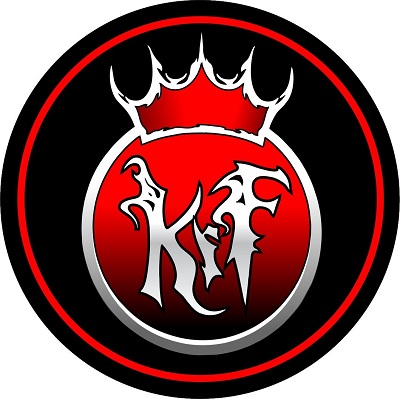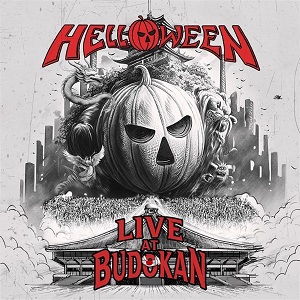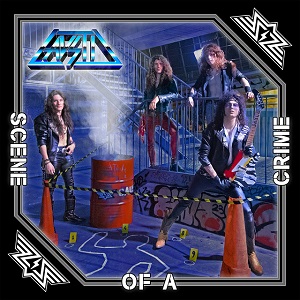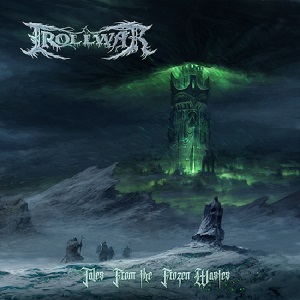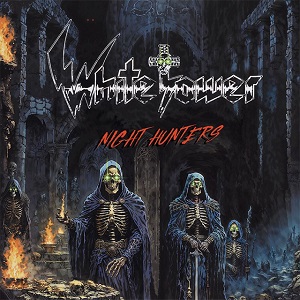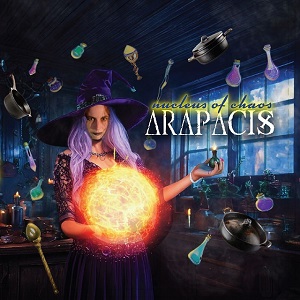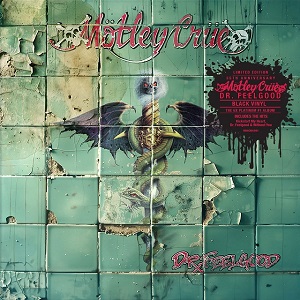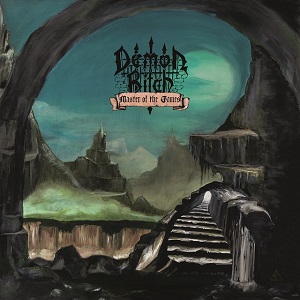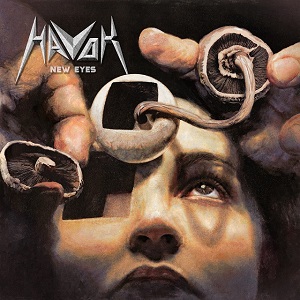FEAR FACTORY Reconstructs Demanufacture
April 20, 2016, 8 years ago
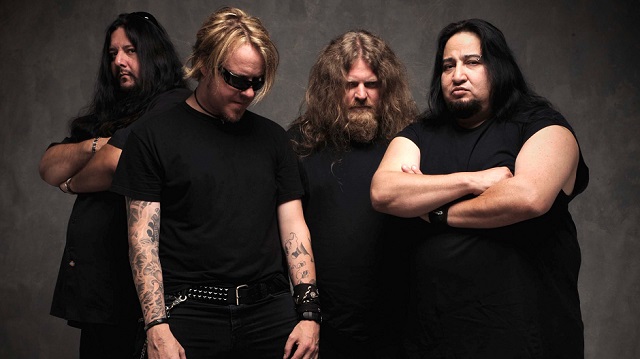
Few bands produce albums as influential and unique as Fear Factory’s Demanufacture. A record of such magnitude only comes around a few times per generation. It is such a great album that the Los Angeles-based band is currently celebrating its twenty-year anniversary by playing the entire album on their current US tour. With Demanufacture the band found its blueprint for future recordings. This included syncopated guitars synched with kick drums, electro-industrial sounds and aggressive-meet-melodic vocals.
Guitarist and founding member, Dino Cazares spoke to BraveWords before playing a sold-out show in San Antonio, Texas. We spoke about not only the making of Demanufacture, but how the album developed from previous recordings, which took us back to the early days of the group. Cazares recalled not only the bands he played in before Fear Factory, but also the bands that influenced Fear Factory. Unlike many groups that find a formula that works on the first album, the first record, Soul Of A New Machine, showed the band in a developing stage. Demanufacture was the result of a combination of influences from previous groups.
“Me and Burton had a band before [Fear Factory],” clarifies Cazares. “It was called Ulceration. Some of the songs we had in that band we ended up using for Fear Factory. ‘Big God’ from the first album. There was a song called ‘Soul Womb’, which was later on the B-sides to Obsolete and ‘Self-Immolation’. Those songs were very much inspired by Godflesh. That was what me and Burton were trying to go for in Ulceration—a Godflesh type of vibe.”
Cazares and Burton C. Bell started Fear Factory with Burton C. Bell. Cazares brought to the band his grindcore influences. Bands like Napalm Death influenced Dino’s playing, while Burton was more of an “industrial guy’ into groups such as Ministry, Nine Inch Nails and Godflesh. Before Fear Factory brought in an actual human skin pounder, Cazares played in a grindcore band called Excruciating Terror.
“I was playing in that band and I met Raymond [Herrera] and he was in another band. He was a killer drummer, so I was like ‘I need to get that guy in mine and Burt’s band,’ but Raymond was thinking, ‘I need to get Dino in my band.’ So I joined Raymond’s band for a minute. Somehow the band imploded. So I had Raymond and I already had Burt. I was doing another band with Burt and a band with Raymond. That band imploded, so I said, ‘Let’s bring Burt.’ I was doing drum machines. Me and Burton had another band with a drummer, but for Fear Factory we did the songs that we had from mine and Burt’s band. We brought them into Fear Factory and we did it with a drum machine.
Due to Herrera getting hurt in a motorcycle accident, Cazares and Bell, who were roommates at the time, did the songs on a drum machine. Another roommate, Robert Murray—a DJ in San Francisco, came up with the name, Fear Factory.

Two-thirds of the band were influenced by grindcore and death metal, but liked industrial enough to let Bell put his electronic stamp on the band. Cazares comments on the band’s death metal/grindcore influence: “We never considered us to be a death metal band, even though we had death metal elements. We called ourselves, back in the day, industrial grind. We tried to come up with a different name other than just calling it a death metal band. But when we were on Roadrunner, back in the early ‘90s, they had Obituary, Deicide, Suffocation, Immolation. They had all of those bands, so when Fear Factory came out with the first record, they put us in there with all of those bands, but we were different. So it was a good thing and it was a bad thing. It was a good thing because we stood out from all those bands, even though we were heavy like that, we stood out because of the melodic vocals.”
Bell’s dual vocal style produced love-it or hate-it attitudes in the metal scene. “That was a good thing and a bad thing because some people hated it and some people loved it, but the people that hated it, eventually ended up liking it. ‘When I first heard your band, that melodic bullshit, what’s up with that? Why are you singing melodically in death metal shit?’ Then a few months later, we’re back on the road opening up for Obituary: ‘You know what? I hated that shit at first, but now I like it! Something about it, I like it.’ So it kind of grew on people. It was a good thing. There are still the purists that don’t really like it, but whatever.”
Whether death metal purists liked this style or not, Fear Factory knew they were onto something special. “That set the standard for where so many bands do it today. There are so many melodic death metal bands, metalcore bands, pop metal bands, you name it. They are doing that duality of the melodic and the heavy—screaming and melodic. Whatever, they are doing that combination. It just comes in many different forms. If Burton had put a patent on an idea, he would be a rich man right now. There were some European bands that did the duality (but they won’t know here) that came out a year later or so after like SoilworK (currently opening for Fear Factory). There were other bands that were maybe singing, melodically, a whole song, but not the combination of the two.
Fear Factory is, without a doubt, a unique band, but just like every band that came before them and every band that will come after, their sound, especially the early recordings reflect bands of interest. “On the first record you can really hear our influences. You hear Napalm Death. You hear Godflesh. You hear some sampling from Ministry-type stuff. You hear the influences that we love. You hear Carcass on songs like ‘Desecrate.’ You hear the stuff that we really liked, but there are some songs in there that stand out like ‘Martyr’, ‘Scapegoat’, ‘Self-Immolation’, ‘Big God’, and ‘Scumgrief.’ Those were typical death metal songs. They were a little different. Also there was the syncopated guitars with the kick drums.”
Synching up the kick drums to syncopated guitar licks was a revolutionary technique at the time. Cazares explains, “There were not a lot of bands doing that. People had pieces, here and there, Metallica being one of those in the ‘80s. There was only one song and that’s the song ‘One’. Just that one part. Why can’t bands do that? So I always had it in my mind that when I did Fear Factory, I wanted to do something like that. The second song on the album you hear ‘Leechmaster’’. That whole song was all syncopated kick drums with the guitars. We knew we were onto something. I wanted to bring that into Fear Factory and I knew I had to get that kind of drummer that could do that.”

While Soul Of A New Machine contained a few songs containing syncopated kick drums and guitars, many of the other songs did not. Fear Factory changed this when they wrote Demanufacture. While Raymond produced this is on some songs, the band did not fully develop this style until Demanufacture, which appeared throughout the whole record. “That was when we found who we are, the combination works and the formula we created worked,” Cazares proudly recalls.
“We were on to something really big here,” Cazares continues. “Burt got better on his vocals. He’s not doing so much of the growls, but more of the heavy vocals, heavy singing. Kind of like when David Vincent went from brutal to a little less brutal, but still aggressive, very clear still, very powerful still. That’s kind of like where Burt went. He got a little more experience on the road. You learn a lot of stuff when you’re touring on the road. We got better. We got tighter. We evolved and Burt’s vocals evolved and it opened a whole new door for us. We got out of the death metal category, lumped in with all the death metal bands, into something more unique and different.”
Creation of Demanufacture did not come in a straight line from Soul Of A New Machine, though. “If you go to the first record, Soul Of A New Machine, that was our way of saying, ‘here we are! We’re the new kids on the block.’ We’re trying to make a statement. Then we did an EP between Soul Of A New Machine and Demanufacture called Fear Is The Mindkiller, which was something completely different.”
While Fear Factory received mixed results from fans regarding the vocals on Soul Of A New Machine, Fear Is The Mindkiller produced similar results. Cazares explains, “A lot of people hated it and eventually ended up liking it. It was basically techno dance mixes with Burt’s growls with melodic vocals and heavy guitars. Somehow we didn’t care. We just wanted to do what we liked. What we were influenced by.”
Cazares sheds light on how they arrived at this style: “The thing is when we did those remixes that was because the first time we went to Europe raves were big. People were naked and having a good time, getting fucked up, taking drugs, the band’s getting laid fucking some techno chicks that had nothing to do with us. We were like, ‘this is a killer scene. We’re getting laid, having a good time.’”
Fear Factory were introduced to the scene by unlikely rave goers. “We were hanging out with the guys from Pungent Stentch. They promote a rave in Austria. They make money! We were there, hanging out with them. They were the ones that exposed us to that scene. We were like, ‘whoa, there is a whole other world’!’ So we had another influence and we thought why not do this? So we did it and it was cool because in Europe they had a lot of metal clubs, not venues that have shows, but metal clubs where people into metal go. They were just bars that played music. They play all metal music. Our remixes were a hit in Europe like the ‘Scapegoat’ remix, which is called the ‘Pigfuck Mix’ about the police. That was a hit in the DJ clubs. They were playing our song and we were like, ‘Wow, this is fucking dope!’ So we were hanging out in those clubs every time we went.”
These raves that helped produced Fear Is The Mindkiller also helped produce the electronic elements that would help define Demanufacture. External events in Los Angeles led to the creation of the album title, Demanufacture. From 1992 to 1995 L.A. experienced a number of disastrous events including the Rodney King riots, earthquakes, the O.J. Simpson trail, fires and Ill Niño.

Cazeres explains how these events influenced naming their second full-length, “all this shit was going on in L.A. and me and Burt looked at each other like ‘this city is falling apart.’ That’s where Demanufacture comes from. That’s where the title came from was our surroundings, which is what we saw. It was insane, so we decided to come up with something new. So basically we said, ‘In order to create something new, you have to destroy the past.’ Not necessarily to destroy the past, but break it down to create a new future. So we thought Demanufacture was the perfect title. ‘What was the opposite of manufacture, to make? Demanufacture, to destroy it.’ So that’s what we thought. It was perfect. Then we came up with the man-machine concept. Of course, we had it from Soul of a New Machine, but it was just a little bit in there.”
Cazares felt that Demanufacture was more focused than the previous record, especially in the area of syncopated guitars and kick drums. Renowned engineer Rhys Fulbar produced many of Fear Factory’s records also provided keyboards. Cazares comments on the importance of Rhys Fulbar’s contributions to Demanufacture. “He knew all that shit, samples. He helped us out with that record. Colin Richardson produced the album. Greg Reely mixed the album.”
Looking back at how wonderful Demanufacture turned out, one might not suspect that the album was not without its hardships. “It was also a hard record to make, not to write the songs, but to actually produce it. We went to Chicago. We started out in Chicago and the studio there was a piece of shit. We were there for two weeks. The computer that we were using kept erasing everything we recorded. It wouldn’t save it. So we said ‘Fuck the studio!’ We went to this place in upstate New York called Bearsville where Metallica recorded ‘One’. It was one big building with three studios.”
Fear Factory weren’t the only ones recording at Bearsville. Disparate bands Bon Jovi and Faith No More were in separate recording rooms. “We hung out with the guys in Faith No More. Billy Gould, the bass player, produced our second demo [Demo ‘91], so we knew him. We knew all the guys.”
Cazares told a funny story about his time in the studio, “when we were there in the studio, our engineer was on the phone and here comes this guy walking by. He thought it was the runner. We had runners in the studio that go out and get your food or whatever you want. He was like, ‘Can you go get me a ham sandwich with light mayo?’ ‘Oh no, I don’t work here.’ He said, ‘Oh, ok.’ Then one of our guys came out and saw what happened and he goes, ‘Do you know who you just asked to get a sandwich?’ He goes, ‘No, who? The runner?’ ‘No, that wasn’t the runner. That was Jon Bon Jovi!’ He had no idea who he was.”
A laughing Cazares tells another funny story regarding recording next to Bon Jovi. “It was a funny story because the drummer from Bon Jovi was recording in the room next to us. Here we were, cranking Demanufacture, listening to some of the tracks. The next thing you know the engineer from Bon Jovi comes over and knocks on the door. He was like, ‘Hey man, do you guys mind turning down?’ We were like, ‘Why?’ ‘Because it’s bleeding into the drum mics’ on the Bon Jovi record. Somewhere in the ambiance in the Bon Jovi record that was recorded in 1995 [These Days] you can probably hear Demanufacture in the background.”
Recording at the same studio as Bon Jovi was by no means Fear Factory’s introduction to celebrities. Hailing from Los Angeles, the group often ran into rock stars. Cazares recalls meeting a certain ex-member of Metallica while working at a sub shop. “When I was seventeen-years old I worked at a sandwich shop. I used to make sandwiches like Subway, but we had beer. It was like a sports bar/sandwich place. In came Dave Mustaine and Dave junior [Ellefson]. Junior was one of his nicknames. So anyway, they came walking in and I was like (gasps). I started freaking out. I ended up hooking them up with free beer and free sandwiches, hanging out and talking to them. Just like when we walk into restaurants and somebody is like, ‘Oh shit! Fear Factory is here! Yeah, we’ll hook you up, man! It’s on us. Don’t worry about it. We’ll take care of you.’ That’s kind of how I was with those guys. It was cool because years later they would return the favor. They took us out on three tours. That was the benefit of living and working in L.A., I get to meet all these musicians. Just being around and hanging out.”

While meeting the two Dave’s from Megadeth gave Cazares a chance to converse with an idol, there were rock idols that Cazares considers peers. He explains, “Burt and I used to have parties at our apartment. You had guys from Slayer, Tom Araya at my house. You had Shannon Hoon (R.I.P.) from Blind Melon. You had Billy Gould and Jim Martin from Faith No More. You had Igor and Max (ex-Sepultura, Cavalera Conspiracy). We had all of them at my parties. We had girls and friends come over."
Even though members of Sepultura and Slayer frequented his parties, metal was not the chosen music for such get-togethers. “Nobody wanted to hear any metal at all. That’s all we hear, so we would put on different shit. We were having a good time, smoking, drinking. The Blind Melon guys were are really good friends when we first started out. We would go support them. They would come support us. It didn’t matter what kind of music the person played, it mattered how cool the person was. Tom Araya would go support them and they would come out to Slayer shows. He’s met them at our house and hung out with them. It was fun. It was one, big mixing pot of musicians that respected each other. The guys in Blind Melon loved Slayer. I can’t say that about the other way around, but they loved Slayer.”
L.A. was the perfect place to take in legendary concerts. Cazares fondly recalls, “We lived in Hollywood, so we would walk to these different clubs. Back in the day, from sometime between ’91 and ’93, Nirvana was playing at a club as small as this club [The Korova in San Antonio, Texas]. Burt is in the front row. There is a picture of him on the back of a live Nirvana record from that time recorded at Roggies. You can see Burt head banging in the picture. He’s also in the ‘Smells Like Teen Spirit’ video. He’s in the crowd head banging. That was during the early Nirvana days. We were going to Alice In Chains shows. We went to a Deee-LITE show. We were going to those shows because we lived so close.”
“We knew everybody that worked at the club,” Cazares continues, “so we would go hang out, party, look at girls. We went to one place called The Palace. Roggies was a little, small punk rock club. We would go to Helter Skelter, Scream, The Hollywood Palladium. My second gig I ever went to was Slayer, Exodus, Venom in 1985. That was my first brutal gig I went to. The first gig I went to was the US festival with Van Halen, Scorpions, Judas Priest, Ozzy, Motley Crue, Quiet Riot and Triumph. That was the first gig I ever went to in 1983. That was in San Bernarndino, California. Then the second gig was the Slayer, Exodus, Venom, so that tells you I went from this metal to this metal. It was 15 or 16 going to Slayer and Venom. Then seeing Metallica and Armored Saint back then on the Ride The Lightning tour. I missed them on Kill ‘Em All. I was too young. I’ve seen so many fucking bands. I saw Megadeth as they were forming.”


